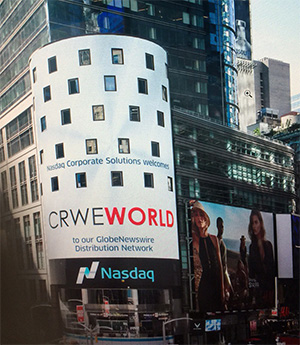Soligenix Corporate Update Letter - Key Highlights and Upcoming Milestones
Soligenix Corporate Update Letter - Key Highlights and Upcoming Milestones |
| [08-July-2025] |
PRINCETON, N.J., July 8, 2025 /PRNewswire/ -- Soligenix, Inc. (Nasdaq: SNGX) (Soligenix or the Company), a late-stage biopharmaceutical company focused on developing and commercializing products to treat rare diseases where there is an unmet medical need, today issued an update letter from its President and Chief Executive Officer, Dr. Christopher J. Schaber. The content of this letter is provided below. Dear Friends and Shareholders, I would like to start by thanking you for your continued support, and hope that you and your families are enjoying your summer. As we look ahead to the remainder of 2025 and into 2026, we remain energized by the promise of our late-stage rare disease pipeline as we continue to evaluate potential strategic options, including, but not limited to, partnership and merger and acquisition opportunities. The previously publicly disclosed upcoming key clinical events and milestones are summarized below.
Additionally, we continue to follow through on our financing strategies, providing us with sufficient capital and cash runway to meet our goals into 1Q 2026. We expect peak annual net sales of HyBryte™ in the U.S. to exceed $90 million, with the total addressable worldwide CTCL market estimated at greater than $250 million annually. Preliminary analysis of the total addressable worldwide psoriasis market opportunity with SGX302, which uses the same active ingredient as HyBryte™, is significant and estimated to exceed $1 billion annually. SGX945 in BD is another meaningful worldwide market opportunity estimated at approximately $200 million annually. Overall, we are excited about our near-term and future upcoming catalytic milestones across our rare disease pipeline, with the potential for significant commercial returns of ~$2B in global annual sales. Corporate Highlights We remain focused on advancing our development programs in our Specialized BioTherapeutics rare disease business segment, most notably the confirmatory Phase 3 HyBryte™ clinical trial, where we currently anticipate achieving multiple important and potentially transformational milestones through 2026. We also continue to evaluate strategic options before us to better position the company for potential success. A more detailed review of this business segment is provided below. In December 2024, we were happy to announce the initiation of our confirmatory Phase 3 FLASH2 study in 80 patients with early-stage CTCL with HyBryte™, which has demonstrated positive outcomes in multiple clinical trials including the first Phase 3 FLASH study. To date, statistically significant treatment success has been demonstrated with as little as 6 weeks treatment, with response rates increasing at 12 and 18 weeks. This is a substantially faster response rate than observed with other commonly used therapeutics for CTCL. These results have been consistently obtained in our previous Phase 3 FLASH study, as well as follow-on supportive studies evaluating the pharmacokinetics of HyBryte™ where very low systemic exposure was observed contributing to HyBryte™'s excellent safety profile. In one recent study, comparing HyBryte™ to Valchlor® (mechlorethamine) treatment over 12 weeks, the HyBryte™ response rate was 60% (n=5) vs. 20% for Valchlor® (n=5). In addition, when looking at longer term HyBryte™ treatment as in the IIS (n=8), a 75% treatment response rate was observed with HyBryte™ treatment by Week 18. As initially reported with the Phase 3 FLASH study and further confirmed in the supportive studies, HyBryte™ appears to be particularly effective against plaque lesions, which are considered more difficult to treat and which may be associated with poorer long-term prognosis. HyBryte™ remains very well-tolerated, unlike most other therapies used for CTCL. Consequently, the confirmatory FLASH2 study is specifically evaluating 18 weeks of treatment, with assessments of both patch and plaque lesions. Enrollment for the FLASH2 study is also leveraging experience gained in the previous Phase 3 FLASH study and supportive studies. As highlighted by Dr. Kim when speaking of the IIS trial, "The complete response rates observed, including three patients achieving a complete response on this study to date, as well as the consistent treatment response and safety profile across multiple HyBryte™ clinical studies, has been exciting to see. In the first Phase 3 FLASH study, HyBryte™ was shown to be efficacious with a benign safety profile compared to the current therapies of steroids, chemotherapeutics and ultraviolet light in this chronic orphan disease. With limited treatment options, especially in the early stages of their disease, CTCL patients are often searching for alternative treatments. In our study funded by the U.S. Food and Drug Administration (FDA), initial results evaluating the expanded use of HyBryte™ in a "real world" treatment setting remain very promising, further supporting and extending results from the previous positive Phase 2 and 3 clinical trials. It also provides further confidence to the potential responses we can expect to see in the confirmatory Phase 3 placebo-controlled FLASH2 study. We look forward to continuing to work with the FDA to complete the IIS while we participate in the confirmatory 18-week FLASH2 study." We remain steadfast in our plans for partnership in the ex-U.S. markets and continue to pursue discussions with potential partners with similar reputation and expertise in this therapeutic area, as we advance towards successful completion of the FLASH2 confirmatory trial in order to aggressively pursue HyBryte™ marketing authorizations worldwide. Given HyBryte™'s success in CTCL, we also are evaluating other potential cutaneous indications that might similarly benefit from the use of our first-in-class synthetic hypericin. The Company has an ongoing Phase 2a study of the hypericin photodynamic therapy (PDT) in mild-to-moderate psoriasis, under the research name SGX302. Other PDTs have shown efficacy in psoriasis with a similar apoptotic mechanism, albeit using UV light associated with more severe potential long-term toxicities. With SGX302, the use of safe, visible light in the red-yellow spectrum has the advantage of penetrating deeper into the skin (much more than UV light) potentially treating deeper skin disease and thicker plaques and lesions, similar to what was observed in the positive Phase 3 FLASH study in CTCL. Further, this treatment approach avoids the risk of secondary malignancies (including melanoma) inherent with both the frequently employed DNA-damaging drugs and other phototherapies that are dependent on prolonged use of UV A or B exposure. The use of synthetic hypericin coupled with safe, visible light also avoids the risk of serious infections and cancer associated with the systemic immunosuppressive treatments used in psoriasis. Psoriasis is an ongoing unmet medical need, with as many as 60-125 million people worldwide affected by this incurable disease. The global psoriasis treatment market was valued at approximately $30 billion in 2023 and is projected to reach as much as $58-67 billion by 2030. Given the promising results with SGX302 to date, including those from the first two cohorts of patients in the ongoing Phase 2a study, as well as data from a small Phase 1/2 Proof of Concept (PoC) clinical trial in mild-to-moderate psoriasis, synthetic hypericin may have a role to play in helping patients suffering from this difficult to treat and chronic disease. As previously noted by Neal Bhatia, MD, Director of Clinical Dermatology at Therapeutics Clinical Research in San Diego and an investigator in the Phase 3 FLASH study, "Similar to CTCL, psoriasis is a chronic disease where the management of side effects and toxicities is as important as the management of the disease itself. Having treated both CTCL and psoriasis patients for over 20 years and having seen first-hand how they struggle to find good treatment options, access to an additional effective and safe therapy would add significantly to patient care and quality of life. The success of synthetic hypericin in targeting malignant T-cells during CTCL clinical trials is a promising indicator of the ability of SGX302 to provide a much-needed approach for the treatment of mild-to-moderate psoriasis, also caused by dysregulated T-cells. This success is further supported by both the previous synthetic hypericin PoC study in psoriasis and by the success, albeit confounded by potentially severe toxicity, of other photodynamic therapies in psoriasis." Supporting our programs in both CTCL and psoriasis, we have successfully transferred manufacturing of synthetic hypericin to a facility located in the U.S., with capacity to manufacture larger batches. With the recent successful manufacture of a cGMP lot, we will be continuing process development to further optimize cost of goods to prepare for the process validation studies necessary for applications for marketing approval worldwide. In addition, we have been evaluating rare disease indications with our novel chemical entity, dusquetide, and remain confident that there are a number of potential development paths forward with this unique compound. The mechanism of action of dusquetide, and the pathways in which its target protein, p62 or SQSTM-1, plays a pivotal role, supports the potential role of dusquetide in Behçet's Disease (BD). BD is an orphan disease with a global market value of $200 million. We have embarked on a BD development program and have a pilot Phase 2a PoC clinical trial in BD with dusquetide, under research name SGX945, where we expect top-line results in 3Q 2025. BD is commonly known as an incurable inflammatory disorder of the blood vessels (vasculitis). Often first diagnosed in young adults, its effects and severity will wax and wane over time. Major signs and symptoms usually include mouth sores (approximately 95% of patients), skin rashes and lesions (approximately 50% of patients), genital sores (approximately 50% of patients), leg ulcers (approximately 40% of patients) and eye inflammation (approximately 15% of patients). It is a painful disease, directly impacting the patient's quality of life and ability to productively engage in life activities, including work. BD is most common along the "Silk Road" in the Middle East and East Asia, including Turkey, Iran, Japan and China. There are approximately 18,000 known cases of BD in the U.S. and 50,000 in Europe. There are as many as 1 million people worldwide living with BD. With approximately $7 million in cash reported in our Form 10-Q for the quarter ended March 31, 2025, not including our non-dilutive government funding, we are focused on closely managing our cash burn in order to achieve our multiple near-term catalysts across our rare disease pipeline. In closing, thank you for your interest and your ongoing support of Soligenix. Although this past year has been difficult for small biotech, our future continues to hold significant promise, as does our late-stage pipeline. We look forward to the remainder of 2025 and beyond, with the potential for multiple near-term and potentially transformational catalysts on the horizon as we further advance our development programs towards commercialization. Best wishes! Dr. Christopher J. Schaber Note Regarding Forward-Looking Statements This press release may contain forward-looking statements that reflect Soligenix's current expectations about its future results, performance, prospects and opportunities, including but not limited to, potential market sizes, patient populations, clinical trial enrollment. Statements that are not historical facts, such as "anticipates," "estimates," "believes," "hopes," "intends," "plans," "expects," "goal," "may," "suggest," "will," "potential," or similar expressions, are forward-looking statements. These statements are subject to a number of risks, uncertainties and other factors that could cause actual events or results in future periods to differ materially from what is expressed in, or implied by, these statements. Soligenix cannot assure you that it will be able to successfully develop, achieve regulatory approval for or commercialize products based on its technologies, particularly in light of the significant uncertainty inherent in developing therapeutics and vaccines against bioterror threats, conducting preclinical and clinical trials of therapeutics and vaccines, obtaining regulatory approvals and manufacturing therapeutics and vaccines, that product development and commercialization efforts will not be reduced or discontinued due to difficulties or delays in clinical trials or due to lack of progress or positive results from research and development efforts, that it will be able to successfully obtain any further funding to support product development and commercialization efforts, including grants and awards, maintain its existing grants which are subject to performance requirements, enter into any biodefense procurement contracts with the U.S. Government or other countries, that it will be able to compete with larger and better financed competitors in the biotechnology industry, that changes in health care practice, third party reimbursement limitations and Federal and/or state health care reform initiatives will not negatively affect its business, or that the U.S. Congress may not pass any legislation that would provide additional funding for the Project BioShield program. In addition, there can be no assurance as to the timing or success of any of its clinical/preclinical trials. Despite the statistically significant result achieved in the first HyBryte™ (SGX301) Phase 3 clinical trial for the treatment of cutaneous T-cell lymphoma or any other studies (including the open-label, investigator-initiated study), there can be no assurance that the second HyBryte™ (SGX301) Phase 3 clinical trial will be successful or that a marketing authorization from the FDA or EMA will be granted. Additionally, although the EMA has agreed to the key design components of the second HyBryte™ (SGX301) Phase 3 clinical trial, no assurance can be given that the Company will be able to modify the development path to adequately address the FDA's concerns or that the FDA will not require a longer duration comparative study. Notwithstanding the result in the first HyBryte™ (SGX301) Phase 3 clinical trial for the treatment of cutaneous T-cell lymphoma and the Phase 2a clinical trial of SGX302 for the treatment of psoriasis, there can be no assurance as to the timing or success of the clinical trials of SGX302 for the treatment of psoriasis. Additionally, despite the biologic activity observed in aphthous ulcers induced by chemotherapy and radiation, there can be no assurance as to the timing or success of the clinical trials of SGX945 for the treatment of Behçet's Disease. Further, there can be no assurance that RiVax® will qualify for a biodefense Priority Review Voucher (PRV) or that the prior sales of PRVs will be indicative of any potential sales price for a PRV for RiVax®. Also, no assurance can be provided that the Company will receive or continue to receive non-dilutive government funding from grants and contracts that have been or may be awarded or for which the Company will apply in the future. These and other risk factors are described from time to time in filings with the Securities and Exchange Commission (the "SEC"), including, but not limited to, Soligenix's reports on Forms 10-Q and 10-K. Unless required by law, Soligenix assumes no obligation to update or revise any forward-looking statements as a result of new information or future events.
SOURCE SOLIGENIX, INC. | ||
Company Codes: NASDAQ-SMALL:SNGX |
Understanding The Importance Of Financial Habits



















